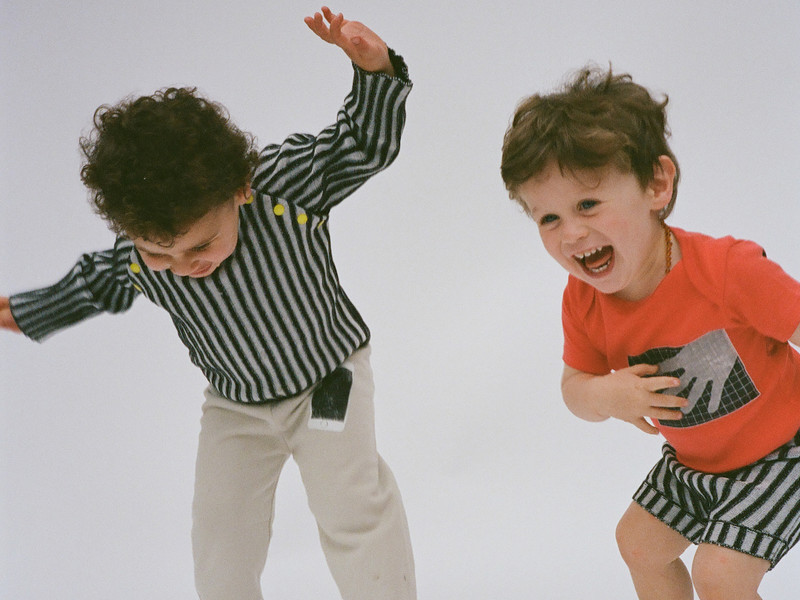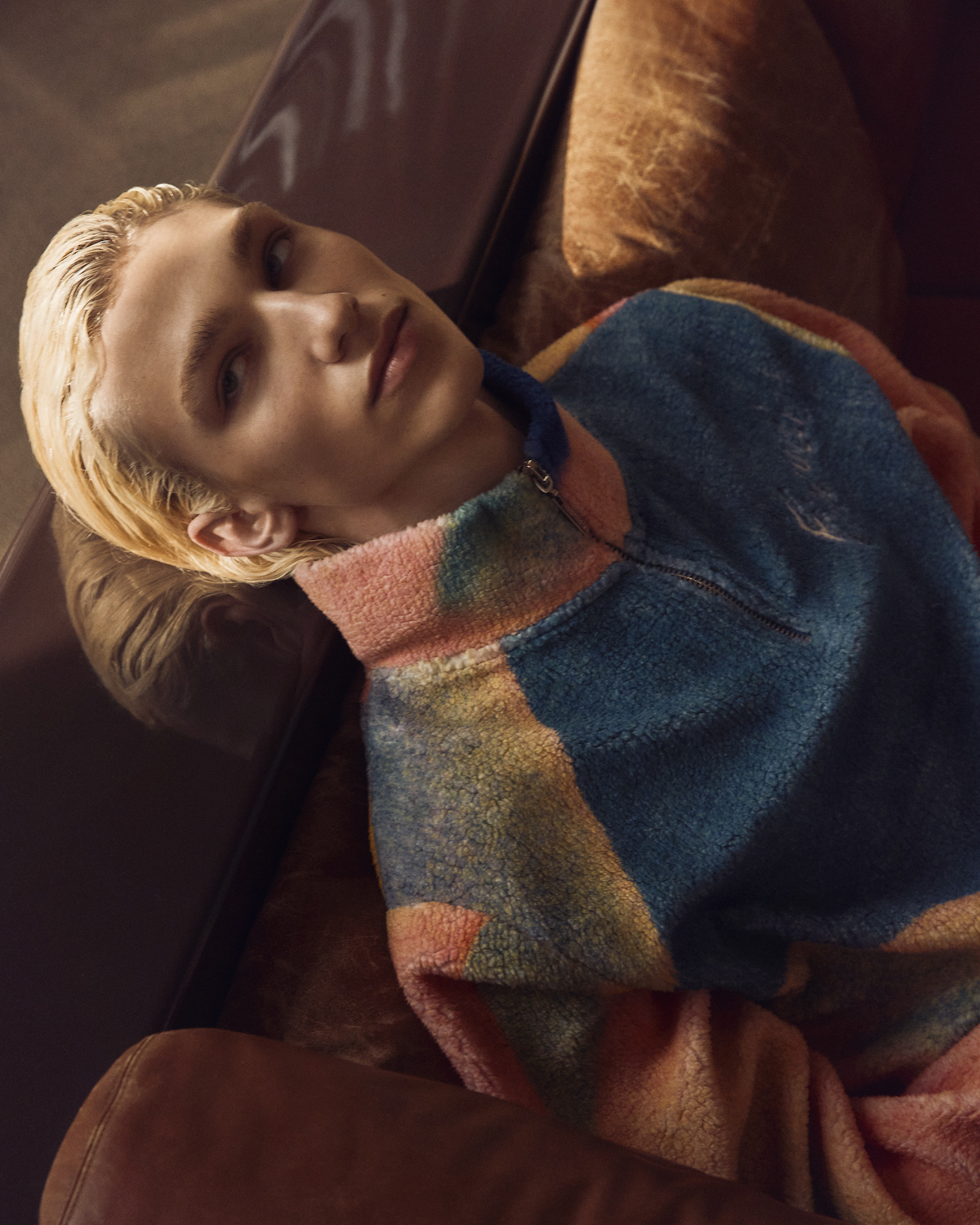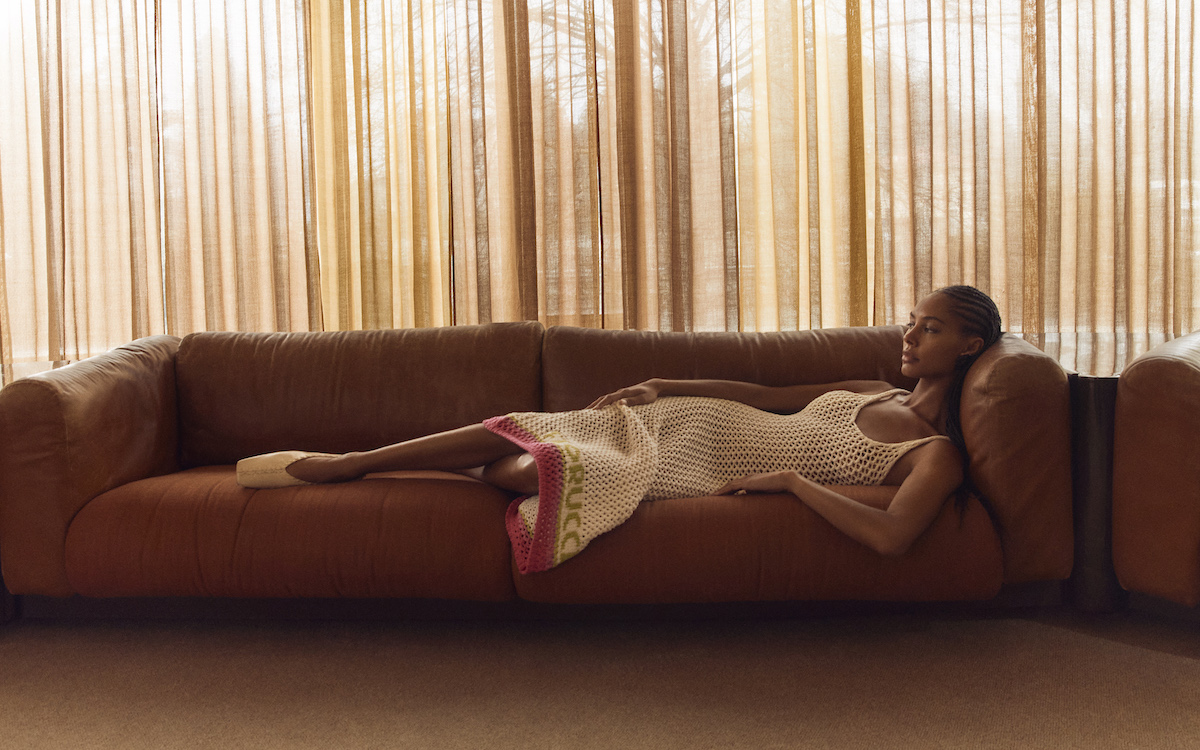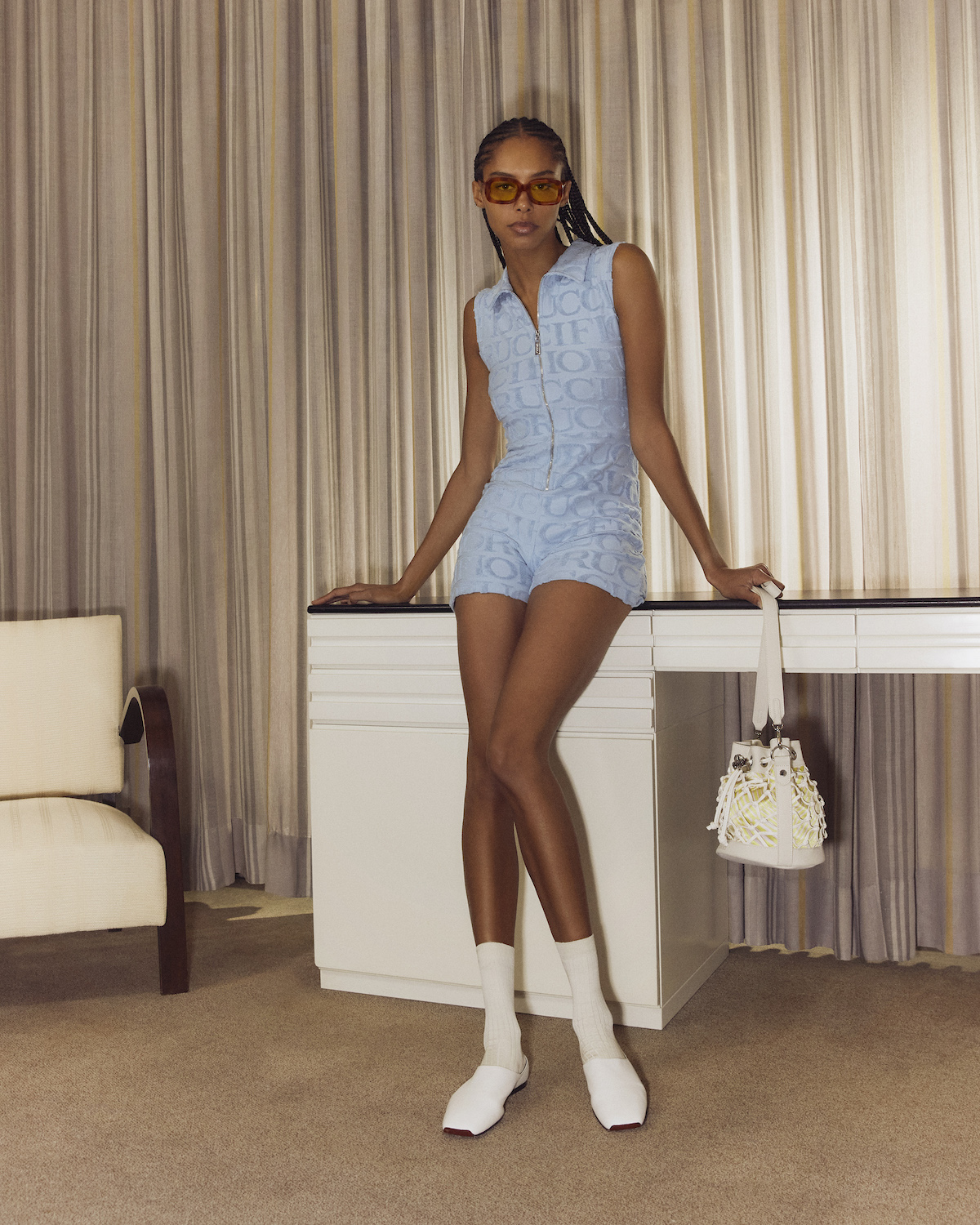Tell me a bit about your background — you have both formal backgrounds in fashion and art, but did you ever think of combining those two when you were first setting out in your career, or was that a later epiphany?
I started painting and sketching at three years old. Since first grade, I also meticulously picked my outfits and was considered odd by my peers. Fashion and art started to merge in my mind during high school and solidified once I was immersed at the Parsons school. During my Junior year, an experimental knitwear course at Central Saint Martins opened my eyes to the ultra-modern, untraditional methods and artistic techniques I could incorporate into a textile. The two fully combined at that point.
Your designs display an appreciation for the avant-garde and the offbeat — who are some avant-garde artists that inspire you?
Iris Van Herpen, Caroline Hu, Gaetano Pesce, Shona Heath, and Inka Essenhigh.
Another aspect of creating something unexpected is drawing inspiration from unconventional places. Aside from other artists, what are the most abstract places or concepts you draw inspiration from for your work?
I am always moved by nature: warped branches, vines, the fungus on the north side of the tree — how it might look in a futuristic setting. I also am drawn to the art of food plating. Chef’s Table and Grant Achatz’s artistic dishes. I pull inspiration from plating arrangements, unique color palettes, and overall food presentation.
Your pieces are super fantastical and conjure imagery of folk tales or ancient god-like beings. What god, goddess, or fairy tale character do you think would most suit your designs?
Fantasia 2000’s Firebird. Every time I watch that scene, I think of my pieces appearing. I really love the concept behind the imaginative plant-fairy, brought to life by an elk breathing on her. The relationship with nature and living beings is what renews the firebird and in turn, everything she touches becomes alive and a sea of flowers bloom. I also love the color palette of this scene.
What first sparked your interest in experimenting with non-traditional materials, such as Bio-plastics and can you describe what the process of making your own materials is like?
I remember feeling limited to a handful of stores to buy fabric for projects I was working on in school. I wanted to be able to paint or sculpt a material from scratch. One of my first trials was spilling acrylic paint pouring medium onto the ground. When it dried, I was able to peel it and drape it like a piece of fabric. This was the beginning of me creating textiles from scratch. One of my professors asked if I’d heard of Bio-plastics — which I hadn’t. I began researching and within a few weeks, fashioned a few recipes that started to work. It’s a constant exercise and adventure. I cook most of the components on my household stove and generate some of my own pigments. I try to use all-natural ingredients. I’ll heat a mixture and sculpt it into the desired shape which will harden with time, adjusting ratios to strengthen or weaken the material. It is a continuous experiment.
















































